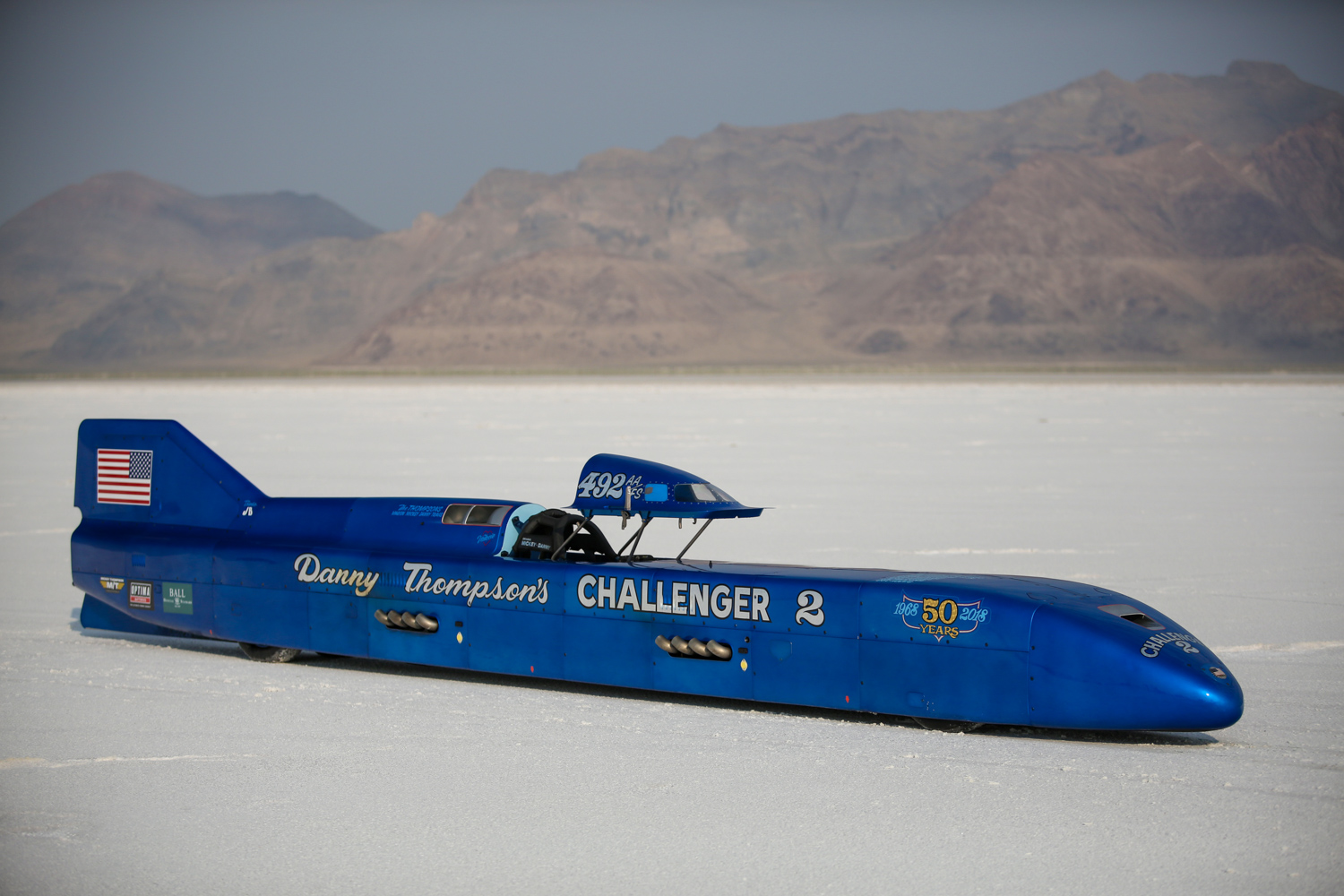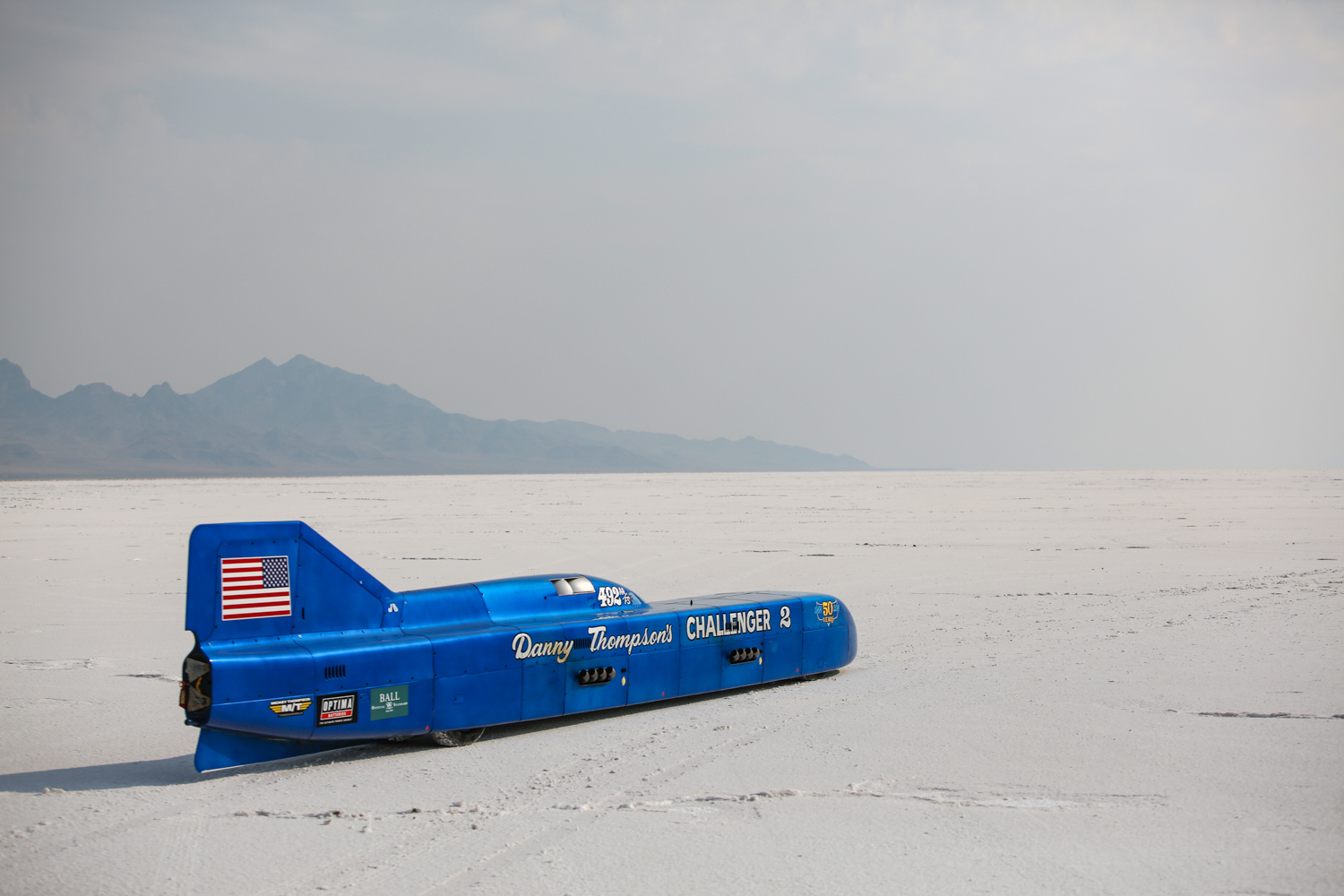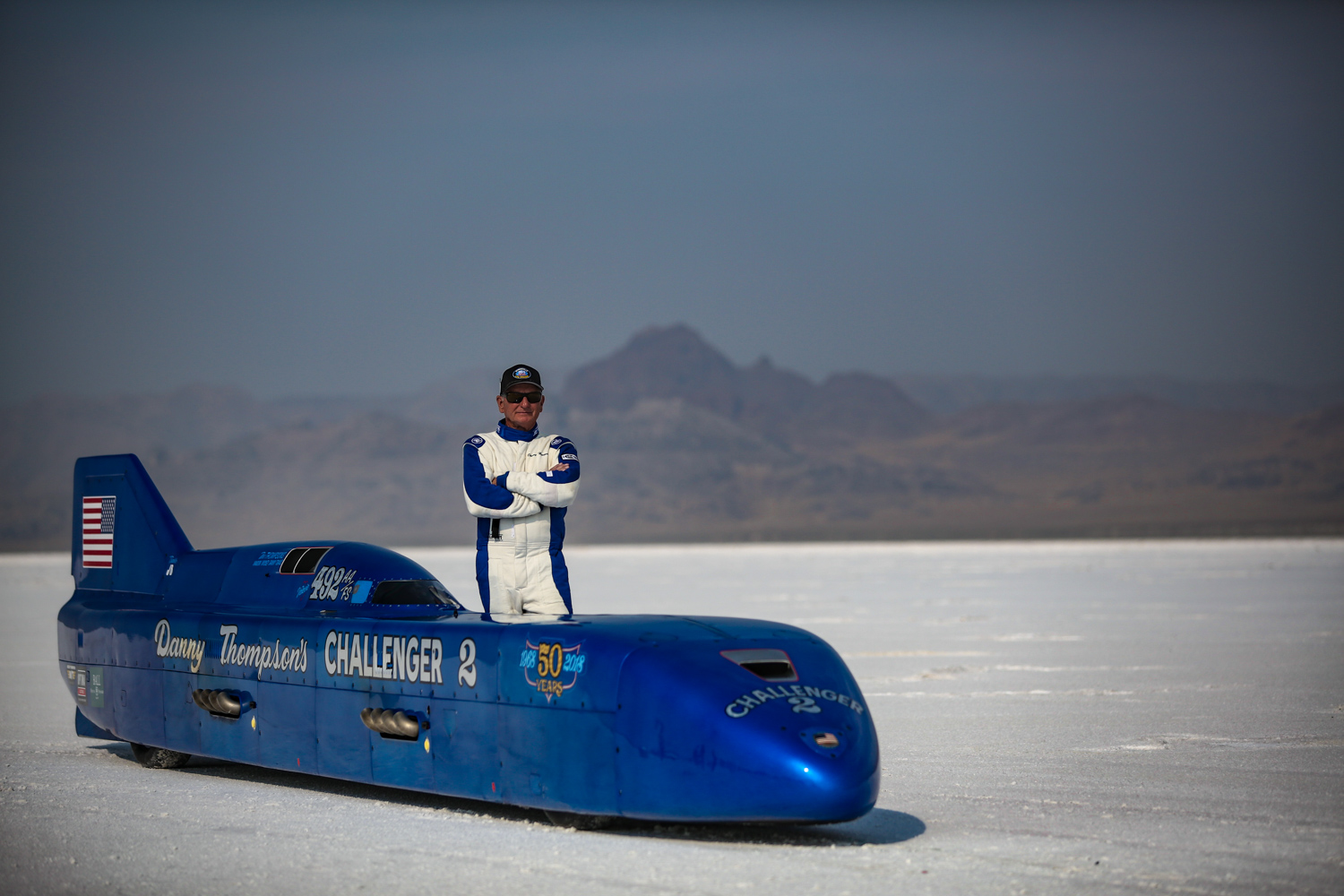Media | Articles
Danny Thompson and the record-breaking Challenger 2 streamliner retire
One of the most storied land speed cars ever built has raced for the last time. Following a 450-mph run at Speed Week 2018, driver and owner Danny Thompson has announced that the Challenger 2 will be retiring. It seems that Thompson himself will retire too.
The car has attempted just 10 full passes since Danny began campaigning the car in 2014. Of those 10, three ended in mechanical failure, but six of the seven complete runs came with timeslips of more than 400 mph. Three qualified for records and two more were return runs that set records. Overall, that’s a stellar record of achievement for a race car and testament to the success of Thompson family and the Challenger 2 crew.
The Challenger 2 was built in just five months in 1968 and Mickey Thompson hoped it would be the first wheel-driven car to claim a record in excess of 400 mph. His previous car, the Pontiac-powered Challenger 1, pushed to 406 mph in 1960 but failed on the return run. The more aerodynamic Challenger 2 was promising in testing. Powered by two Ford 427 SOHC engines—one supercharged, the other naturally aspirated—it required a judicious application of the twin foot-operated throttles to keep steady. The weather at Bonneville didn’t cooperate in 1968 and Ford pulled its sponsorship in 1969 before the car could ever be fully proven. Challenger 2 went into storage.


After a major rebuild that took place throughout 2013, Danny Thompson and his wife, Valerie, along with the Challenger 2 crew, have been vying to make it the fastest piston-powered car on the salt. Gone are the Ford 427 SOHC engines, replaced by twin fuel-injected Hemis running on 50–85-percent nitromethane, each producing about 2500 horsepower.
Marketplace
Buy and sell classics with confidence
Danny, his crew, and land speed racing fans were all eager to see the car make its big debut, but Mother Nature had other plans and Bonneville Speed Week was rained out in 2014. At the next available Bonneville meet, World of Speed, Danny made three passes, breaking the 400-mph mark on only its second full run before a clutch failure on the following run put it on the trailer before it could back up a record. Speed Week was rained out again in 2015. Using the downtime to make additional tweaks on the car, the Challenger 2 hit the salt at Speed Week 2016 and ran 419.191 mph, qualifying for a record. The following morning Danny backed up the run with a 402.348 mph run, giving the Challenger 2 the record with an average speed of 406.769mph, almost the exact speed that Mickey had run in Challenger 1 in 1960.
At Speed Week 2017, engine problems kept the team from chasing records and the HOT ROD trophy for the fastest pass of the week, despite a promising opening run of 435.735 mph. Challenger 2 returned in 2018, and the racing conditions at Bonneville were the best that Danny and the crew had ever seen. Its opening run was a blistering 446.605 mph. In a sport where records are often bumped up my a few mph at a time, or even just a tenth at a time, it was huge. The team had budgeted for only two passes and Danny made it count, steering and pedaling the car, which doesn’t have traction control, to a 450.909 mph pass, good for an average of 448.757 mph. The spectators who gathered at the starting line had been anxiously straining to hear the report over the radio and cheered with the Challenger 2 team when the news came through.
The Team Vesco Turbinator II streamliner managed to make history just days later and set the overall fastest run in Speed Week history, but Danny and the Challenger 2 crew have the AA/FS record and a unique claim. Danny explained, “As of today, the Challenger 2 is the fastest piston driven record holder, which isn’t really a thing by the way. It’s not a class, or an official title, or something you get a trophy for. But it’s what I’ve wanted from day one of the project, because it’s what MT and I believed the car had the potential to be.”
Land speed racing, like most all racing, isn’t a cheap hobby. It was difficult for Mickey Thompson to get the sponsorships required to chase after a 400-mph record in the Challenger 2 in the ’60s, and it hasn’t gotten any easier since. Danny relied on a volunteer crew to service the car between runs and get him and the car ready for every pass. He had some sponsors that helped make his runs in the Challenger 2 possible over the past four years, but he and Valerie also poured plenty of money into it.
After setting the AA/FS record in 2016 and bumping it up by 42 mph in 2018, Danny has decided to hang up his helmet and become a Speed Week spectator and fan, cheering on racers as they go after records, even if that record is his own.




